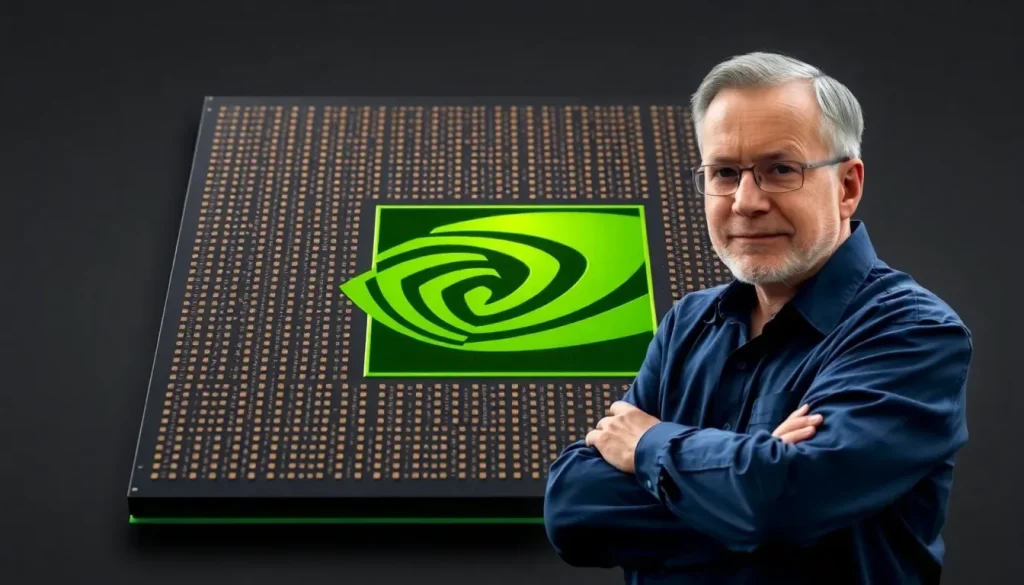Pat Gelsinger Commends NVIDIA's Blackwell Wafer for US Chip Manufacturing

The world of semiconductor manufacturing is in a state of transformation, with notable figures like Pat Gelsinger, the former CEO of Intel, weighing in on pivotal developments. His recent remarks on NVIDIA's efforts to produce the Blackwell chip wafer in the United States highlight a significant shift toward revitalizing domestic manufacturing. This initiative not only points to a growing recognition of the importance of producing chips on American soil but also underscores the competitive landscape within the tech industry.
- Pat Gelsinger's stance on NVIDIA's domestic manufacturing
- The significance of NVIDIA's Blackwell wafer production
- Historical context of U.S. chip manufacturing
- The competitive landscape: Intel vs. NVIDIA
- Recognizing industry efforts for domestic manufacturing
- The future of semiconductor manufacturing in the U.S.
Pat Gelsinger's stance on NVIDIA's domestic manufacturing
Pat Gelsinger has publicly praised NVIDIA's production of the first Blackwell chip wafer in the U.S., marking a rare moment of appreciation towards a rival company. Historically, Gelsinger’s relationship with NVIDIA has been contentious, often critiquing the company's approach to artificial intelligence (AI) and its competitive strategies. In a post on X, he expressed his support for American manufacturing, stating it aligns with his vision of building advanced products domestically.
Gelsinger has long been an advocate for revitalizing the U.S. semiconductor industry. His implementation of the "IDM 2.0" strategy during his tenure at Intel aimed to position the company as a leader in chip production for the coming decade. This strategy not only emphasizes innovation but also focuses on increasing domestic manufacturing capabilities.
The significance of NVIDIA's Blackwell wafer production
NVIDIA's recent achievement of producing Blackwell wafers in Arizona represents a substantial milestone in the push for U.S.-based chip manufacturing. However, this accomplishment is accompanied by certain challenges that need to be addressed:
- OSAT Services Shortage: The U.S. lacks sufficient outsourced semiconductor assembly and test (OSAT) services, limiting the capabilities to fully complete the chip manufacturing process domestically.
- Supply Chain Dependencies: While wafer fabrication is a significant step, the U.S. remains dependent on foreign facilities for advanced packaging and other critical manufacturing stages.
- Long-Term Goals: Building a self-sufficient semiconductor industry will require years of investment and development to create a robust supply chain.
Addressing these challenges is crucial for the long-term sustainability of the U.S. semiconductor industry. As Gelsinger noted, a comprehensive approach that goes beyond wafer production is essential for achieving complete self-sufficiency in semiconductor manufacturing.
Historical context of U.S. chip manufacturing
Historically, the U.S. has been a leader in semiconductor technology, home to pioneering companies like Intel and AMD. However, over the past few decades, much of the manufacturing has migrated overseas, particularly to Asian countries where labor and production costs are lower. This shift has led to concerns about national security and economic stability.
In response, initiatives like the CHIPS Act, introduced during the Biden administration, aim to incentivize domestic semiconductor production. The act allocates funds to support American chip manufacturers and fosters research and development, with the goal of regaining competitive advantage. Gelsinger's contributions to this narrative have been significant, as he has consistently pushed for policies that promote U.S. manufacturing.
The competitive landscape: Intel vs. NVIDIA
The rivalry between Intel and NVIDIA has been characterized by differing strategies and market segments. While Intel has historically focused on mainstream computing and data center processors, NVIDIA has carved out a niche in AI and graphics processing. This divergence has led to contrasting business models and technological priorities, often resulting in Gelsinger's critical remarks about NVIDIA's approach.
Gelsinger previously referred to NVIDIA's CUDA software stack as a "moat," emphasizing how it creates a competitive barrier for other companies in the AI and machine learning space. This rivalry has intensified as both companies seek to capitalize on the growing demand for AI solutions, with Intel planning to enter the inference market more aggressively.
Recognizing industry efforts for domestic manufacturing
Despite the competitive tensions, Gelsinger's recent acknowledgment of NVIDIA's manufacturing efforts reflects a broader industry recognition of the need for collaboration and progress. As semiconductor manufacturing becomes increasingly vital to economic and national security, the focus on domestic production is seen as a critical development.
The recognition of NVIDIA’s achievement serves as a call to action for other tech companies to invest in U.S. manufacturing capabilities. With a concerted effort from industry leaders, the hope is to build a resilient semiconductor ecosystem that can withstand global competition and supply chain disruptions.
The future of semiconductor manufacturing in the U.S.
Looking ahead, the trajectory of U.S. semiconductor manufacturing will depend on several factors:
- Investment in R&D: Continued investment in research and development is essential to foster innovation and maintain technological leadership.
- Building a skilled workforce: Ensuring a pipeline of talent skilled in semiconductor manufacturing and design is critical to the industry's future.
- Policy Support: Government policies that support domestic manufacturing through incentives and funding will play a vital role in revitalizing the industry.
As the landscape continues to evolve, the collaboration between major players like Intel and NVIDIA may offer new opportunities for growth and innovation in semiconductor manufacturing. The industry stands at a pivotal moment, where the efforts to bring production back to the U.S. are not just beneficial for individual companies but for the economy as a whole.
For more insights on this topic, you can watch an informative discussion featuring Pat Gelsinger regarding AI and semiconductor advancements:




Leave a Reply